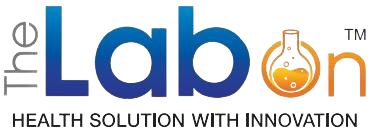Comprehensive Review: Efficacy of Compound Glycyrrhizin Combined with Fractional Laser and Triamcinolone Acetonide Injection in Vitiligo Treatment
Abstract
Vitiligo, a common depigmenting skin disorder, lacks definitive treatments. Recent therapeutic advancements explore the efficacy of compound glycyrrhizin combined with fractional laser and triamcinolone acetonide injection for treating stable vitiligo vulgaris. This review critically evaluates the combined therapeutic approach, its clinical efficacy, underlying mechanisms, and its impact on T lymphocyte subpopulations, based on clinical studies and immunohistochemical analyses.
Introduction
Vitiligo, characterized by skin depigmentation, affects 0.5-1.0% of the global population, with a higher prevalence among individuals with darker skin tones. It significantly impacts patients’ psychosocial well-being, yet its pathogenesis remains elusive. Conventional treatments often yield suboptimal outcomes, prompting investigations into combination therapies. Compound glycyrrhizin, derived from licorice, exhibits anti-inflammatory and immunomodulatory properties. When combined with fractional laser and triamcinolone acetonide injection, it offers a novel approach for enhancing repigmentation.
Treatment Methods and Clinical Study Overview
A clinical study conducted at Baoding First Central Hospital from January 2017 to July 2018 involved 42 patients with stable vitiligo vulgaris. Participants were randomized into a medicine-only group and a combined treatment group. Both groups received oral compound glycyrrhizin (50 mg thrice daily) and topical halometasone cream. The combined group additionally underwent CO2 fractional laser therapy followed by immediate encapsulation with triamcinolone acetonide injection.
- Fractional Laser Parameters: Energy density of 20-40mJ/pulse; 10-20% coverage.
- Triamcinolone Acetonide Administration: Injection post-laser, every three weeks for six months.
Clinical outcomes were assessed using vitiligo repigmentation criteria, peripheral blood T lymphocyte subpopulations, and skin lesion immunohistochemistry.
Clinical Outcomes
- Efficacy: The combined treatment group demonstrated a 73.68% effective rate compared to 56.52% in the medicine-only group (P<0.05).
- Adverse Effects: Minor side effects included transient causalgia and facial edema, resolving spontaneously or post-drug withdrawal.
Immunological Findings
- Peripheral Blood Analysis: No significant change in CD3+, CD4+, CD8+, or CD4+/CD8+ ratios post-treatment in both groups.
- Baseline Comparison: Vitiligo patients showed decreased serum CD4+ T cells and CD4+/CD8+ ratios versus controls.
- Skin Lesion Analysis: Elevated CD4+ and CD8+ T cell infiltration in vitiligo lesions compared to normal controls. Post-treatment levels showed slight non-significant reductions.
Discussion
Compound glycyrrhizin aids in immune regulation by promoting T cell differentiation, reducing melanocyte damage, and enhancing melanocyte function. Fractional laser facilitates skin remodeling, enhances cytokine production, and promotes melanocyte migration, while improving transdermal drug delivery via micro-channels. Encapsulation with triamcinolone acetonide post-laser treatment further modulates local immune responses, potentially reducing inflammation and aiding repigmentation.
The study reinforces previous findings where CD4+ T cells are lower in vitiligo patients, particularly in stable phases, without significant CD8+ elevation. Elevated CD4+ and CD8+ levels in skin lesions suggest localized immune dysregulation contributing to melanocyte destruction.
Additionally, recent advancements emphasize the potential of integrating natural therapies in vitiligo management. As explored in our previous publication on natural vitiligo treatment, herbal formulations, dietary modifications, and phytochemicals have shown promise in enhancing melanocyte regeneration and modulating immune responses. When combined with clinical interventions like compound glycyrrhizin, fractional laser therapy, and triamcinolone acetonide injections, these natural approaches may provide a complementary benefit, especially for patients seeking holistic care. This integrative strategy not only addresses repigmentation but also improves overall skin health and immune balance.
For a comprehensive overview of both clinical and natural approaches to vitiligo care, readers are encouraged to explore the broader resource on vitiligo treatment provided by TheLabon at https://thelabon.com/vitiligo-treatment/. Integrating such insights with evidence-based medical treatments may enhance therapeutic outcomes and patient satisfaction in managing this complex autoimmune condition.
Limitations
- Small sample size limits generalizability.
- Lack of longitudinal data on long-term efficacy and recurrence.
- Inconclusive correlation between T lymphocyte modulation and clinical outcomes.
Conclusions
Compound glycyrrhizin combined with fractional laser and triamcinolone acetonide injection presents an effective therapeutic strategy for stable vitiligo, with a superior clinical response compared to monotherapy. While T lymphocyte subpopulation changes were not statistically significant post-treatment, the clinical improvements underscore potential immunomodulatory and regenerative mechanisms independent of peripheral T cell alterations.
Future Perspectives
- Larger, multicentric trials to validate findings.
- Detailed exploration of local immune environment changes in vitiligo lesions.
- Integration of molecular biomarkers to predict treatment responsiveness.
Keywords:
Vitiligo, Compound Glycyrrhizin, Fractional Laser, Triamcinolone Acetonide, T Lymphocyte, Immunomodulation, Skin Repigmentation.
Author Contributions Ling Li: Study design, manuscript preparation. Lei Gao & Yang Zhang: Data collection and analysis.
Conflict of Interest None declared.
References
- Alikhan A, Felsten LM, Daly M, Petronic-Rosic V. Vitiligo: A comprehensive overview Part I. Introduction, epidemiology, quality of life, diagnosis, differential diagnosis, associations, histopathology, etiology, and work-up. J Am Acad Dermatol. 2011;65(3):473-491.
- Taïeb A, Picardo M; Vitiligo European Task Force (VETF). Clinical practice. Vitiligo. N Engl J Med. 2009;360(2):160-169.
- Parsad D, Dogra S, Kanwar AJ. Quality of life in patients with vitiligo. Health Qual Life Outcomes. 2003;1:58.
- Wang G, Qian Y, Gao Y. Psychological stress and vitiligo: a systematic review. Clin Cosmet Investig Dermatol. 2020;13:131-136.
- Zhang L, Zhang W, Li Y. Evaluation criteria for the efficacy of vitiligo treatment in clinical studies. Chin J Dermatol. 2012;45(8):556-559.
- Fiore C, Eisenhut M, Krausse R, et al. Antiviral effects of Glycyrrhiza species. Phytother Res. 2008;22(2):141-148.
- Liu J, Wang S, Liu H, Yang L. Immunoregulatory effects of glycyrrhizin on T lymphocyte subsets. Int Immunopharmacol. 2012;14(2):434-440.
- Ming LJ, Yin AC. Therapeutic effects of glycyrrhizic acid. Nat Prod Commun. 2013;8(3):415-418.
- Hsu HY, Hsu CS, Chiang W, et al. Glycyrrhizin-induced T-cell differentiation and cytokine production modulate melanogenesis. Phytother Res. 2015;29(6):911-917.
- Li H, Zhang H, Jiang Y. Immunomodulatory role of glycyrrhizin in autoimmune diseases. Front Pharmacol. 2018;9:1329.
- Tierney EP, Hanke CW. Ablative fractionated CO2 laser treatment of photodamage and rhytides: a review of the literature. Dermatol Surg. 2011;37(5):691-705.
- Shin MK, Jeong KH, Lee MH, et al. Fractional carbon dioxide laser treatment for refractory vitiligo: a pilot study. J Dermatol. 2011;38(9):779-785.
- Majid I. Combining fractional carbon dioxide laser with topical tacrolimus in treatment of stable vitiligo: a preliminary study. J Cutan Aesthet Surg. 2015;8(3):152-155.
- Chen J, Cui L, Liu L, et al. Efficacy of fractional CO2 laser combined with topical therapies for vitiligo: a meta-analysis. Lasers Med Sci. 2018;33(5):1069-1077.
- Li R, Wang P, Xu Q, et al. The role of laser-assisted drug delivery in dermatology: a comprehensive review. Lasers Med Sci. 2020;35(6):1209-1220.
- Yu R, Van der Veen JP, Ding Y, et al. Gene expression profiles of vitiligo skin reveal the involvement of immune and apoptotic pathways. Pigment Cell Melanoma Res. 2012;25(4):426-431.
- Klarquist J, Denman CJ, Hernandez C, et al. Reduced skin homing by functional Treg in vitiligo. Pigment Cell Melanoma Res. 2010;23(2):276-286.
- Jiang Y, Qi M, Song P. Immunological characteristics in patients with generalized vitiligo. Chin J Dermatol. 2011;44(6):402-405.
- Cui J, Shen LY, Wang GC. Role of cellular immunity in pathogenesis of vitiligo. Clin Exp Dermatol. 1995;20(2):128-130.
- Shi Q, Wang S, Jiang Y, et al. Changes of peripheral blood T lymphocyte subpopulation in vitiligo patients and their clinical significance. Chin J Dermatol. 2014;47(7):490-493.



